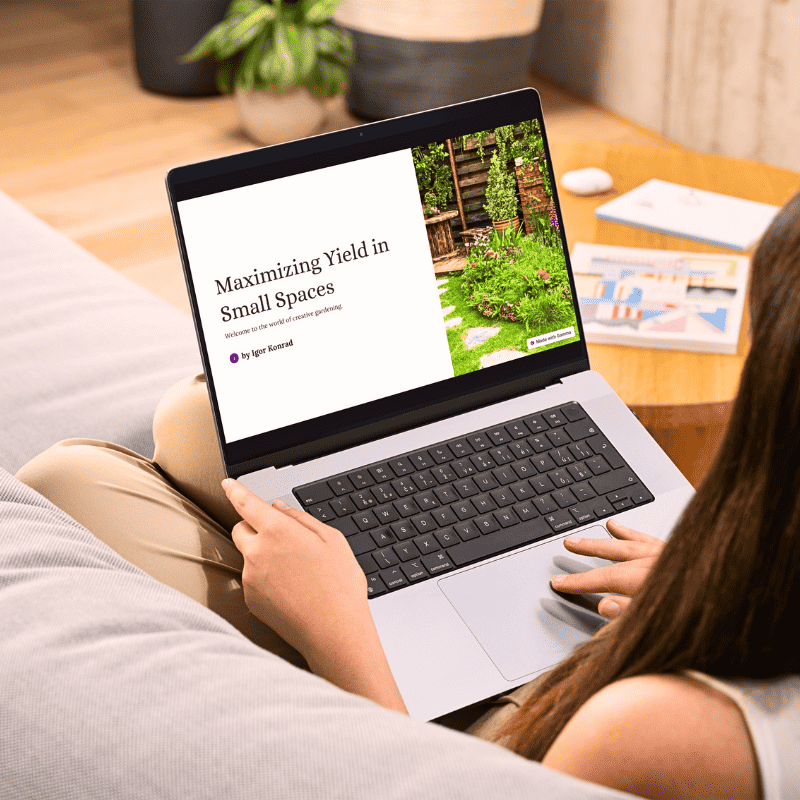In this age of scarcity, ever-increasing costs of living, and amidst some not-so-tasty supermarket vegetables we get on the way home – a tiny oasis waits to be discovered. Sometimes it can be found in the corner of our lives – on the windowsill, the small and cluttered backyard we are mostly embarrassed of, or even on the rooftops or urban plots.
Welcome to the world of small garden worlds where every (and that means every) available space counts and holds the promise of abundant harvest. The journey, however, is not easy as it will require creativity, thinking outside the box, and resilience but it is well worth it.
Maximizing Space
Strategic Plant Placement
Maximize your mini-farm potential with clever layouts, companion planting, and space-saving hacks.
Taking a different approach in a small vegetable garden where space and possibilities are scarce is essential. Whether it’s a small balcony, a tiny backyard, or a setup in an urban environment like a compact plot, you must be a master strategist in placing your plants to achieve a bountiful harvest. For more ideas on maximizing small spaces, check out the Square Foot Gardening Foundation.
It is also essential to think “Vertically.” Installing sturdy trellises against the wall or the fence will give you additional space for plants (and harvest). In the case of small spaces, you would have to follow the “square foot gardening” method, where each square foot of garden is intensively planted.
You will eliminate guesswork and improvisation by dividing your available space into grids. Specific plant grids are based on plant size and ensure optimum spacing. This dense planting method reduces the number of weeds (as it takes out available growing space), conserves moisture, and simultaneously reduces irrigation and your water bill.
4×4 Raised Bed: A typical example involves a raised bed measuring 4 feet by 4 feet (app. 1.2m x 1.2m), resulting in 16 individual square feet (app 1.49 sqm). This layout allows various crops to be strategically planted within the defined squares.
Here are some examples that you should use in creating grids/squares in your garden:
Salad square: Plant lettuce, spinach, radishes, and herbs for a continuous harvest of fresh greens.
Tomato and pepper square: Combine a single tomato plant with peppers and companion herbs like basil.
Herb garden: Dedicate a square to herbs like parsley, cilantro, and chives.
Mixed vegetable square: Interplant miniature vegetables like carrots, beets, and onions for a diverse harvest.
As space is limited, the best solution is to grow compatible plants together. This method is known as companion planting, and it is a well-known gardening method that utilizes the fact that certain plants have mutually beneficial relationships when planted together.
Planting herbs or flowers attracts pollinators like bees and butterflies, which helps with fruit and vegetable production.
Picture – Raised Bed Garden
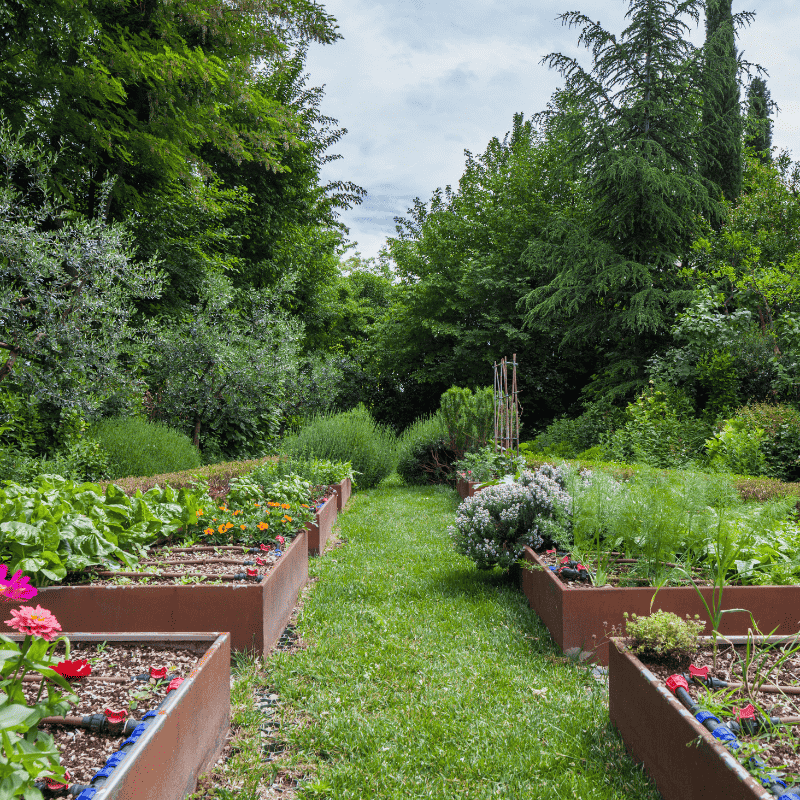
It is also important to think “Vertically” Installation of sturdy trellises against the wall or the fence will give you additional space for plants (and harvest). Learn more about vertical gardening techniques at Vertical vegetable gardening / RHS.
In the case of small spaces, you would have to follow the “square foot gardening” method where each square foot of garden is intensively planted.
By dividing your available space into grids you will eliminate guesswork and improvisation as specific plant grids are based on a plant size and ensure optimum spacing. This dense planting method reduces the number the weeds (as it takes out available growing space), conserves moisture, and while simultaneously reducing irrigation and therefore your water bill as well. For detailed guidance, visit the Square Foot Gardening Foundation.
4×4 Raised Bed: A common example involves a raised bed measuring 4 feet by 4 feet (app. 1.2m x 1.2m), resulting in 16 individual square feet (app 1.49 sqm). This layout allows for a variety of crops to be strategically planted within the defined squares.
Here are some examples that you should use in creating grids/squares in your garden:
Salad square: Plant lettuce, spinach, radishes, and herbs for a continuous harvest of fresh greens.
Tomato and pepper square: Combine a single tomato plant with peppers and companion herbs like basil.
Herb garden: Dedicate a square to a variety of herbs like parsley, cilantro, and chives.
Mixed vegetable square: Interplant smaller vegetables like carrots, beets, and onions for a diverse harvest.
Illustration – garden square
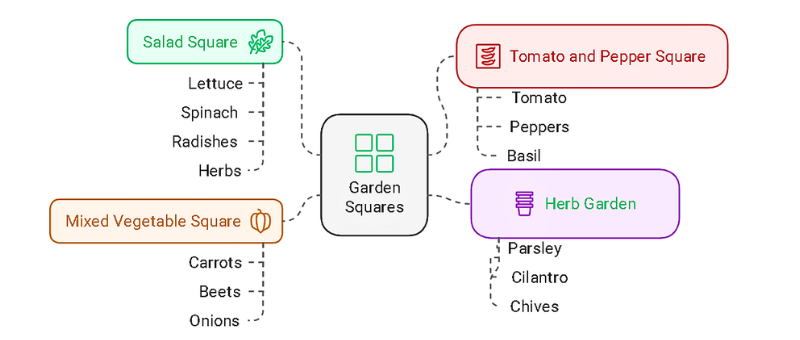
As space is limited the best way is to try to grow certain compatible plants together. This method is known as companion planting and is a well-known gardening method that utilizes the fact that there are mutually beneficial relationships between certain plants when planted together.
If you plant herbs or flowers, they will attract pollinators like bees and butterflies, which will help with fruit and vegetable production.
Picture – Tomato and Marigolds

Tomatoes and marigolds are a great example of companion planting!
Marigolds can help repel pests like nematodes, whiteflies, and tomato hornworms, while attracting beneficial insects like pollinators and parasitic wasps.
Smart Design Secrets
Layout Planning Tips
Try to create a sensory gardening experience by creating a garden that is not only visually appealing but engages other senses as well – smell, touch, and sound. Fragrant herbs, wind chimes, textured foliage, and if space permits even water features will create not only a source of food but also a beautiful nature oasis in your backyard.
Illustration harmonious garden. Image created by krea.ai
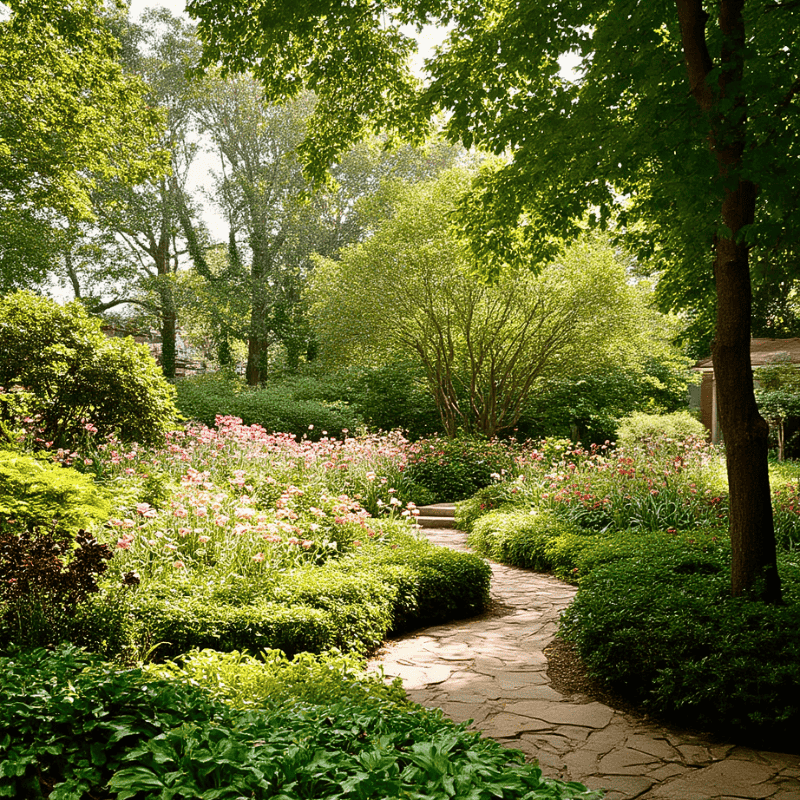
Impact of Soil, Sun Orientations, and Spacing
Ensure you keep your soil well drained as this is one of the most important preconditions for successful gardening. This will ensure that there is proper aeration and will prevent waterlogging. Roots of your flowers, herbs, or veggies can access oxygen and other nutrients and achieve optimum growth.
Maintaining well-drained soil will also minimize the risk of some devastating fungal diseases. Spores of fungal pathogens that will thrive in overly moist soil are likely to be: Phytophthora, Fusarium, Rhizoctonia, Pythium, Erwinia and Armillaria root rot causing spores.
Using compost and increasing organic matter in your soil will greatly benefit your plants.
Understanding your garden’s sun exposure before you invest time and money in choosing plants can help you select the right ones. Assess whether your garden receives full sun, partial sun, or full shade to make informed plant choices.
Follow the recommended spacing guidelines, usually displayed on the back of the seed pack, container, or sachet. Proper spacing allows for good air circulation and helps prevent disease occurrence.
Picture – Fodder beet affected by root rot

Productive Varieties
Best Vegetables for Small Gardens
As the space is limited best option is to opt for compact high yield varieties. Lettuce is always a good choice: tip: you can harvest lettuce leaves as you need them – if you avoid damaging the lettuce grown leaves will regrow. Check out some creative container gardening ideas for small spaces.
Always include crop rotation strategies in your gardening plan. This will prevent nutrient depletion, ensure diverse microflora, and reduce pest pressure. Ultimately, it will result in higher yield while creating a sustainable ecosystem in your garden.
One of the general guidelines you can follow in your garden is to start with legumes.
Pick up some that can fit your garden, like pole beans (as they will grow vertically), preferably compact varieties (e.g., “Provider” or “Blue Lake Bush”). Dwarf peas (e.g., “Tom Thumb” or “Little Marvel”) and Bush lime beans (e.g., “Fordhook” or “Henderson”) make a good choice as well. Besides giving you high yields, legumes will help fix nitrogen in the soil.
You will want to utilize that fixed nitrogen by planting the brassicas plants next – i.e miniature or dwarf cabbages (i.e. “ Baby Pixie” or “Mini Dynasty”), baby broccoli – Broccolini, Kale (i.e. “Dwarf Blue Curled” or “Dazzling Blue”), Asian greens like baby bok choi or tatsoi). These brassica varieties are well adapted to smaller spaces.
Lastly, you may finish your crop rotation cycle with some root crops. Onions, radishes, carrots, and turnips make a good choice as they will thrive in this well-rounded crop rotation cycle, promoting soil health and also acting as a barrier against the build-up of some pests and diseases.
Looking at your space make a well-thought-out sequence of these crops (legumes – brassicas – root crops) and increase your overall output/harvest.
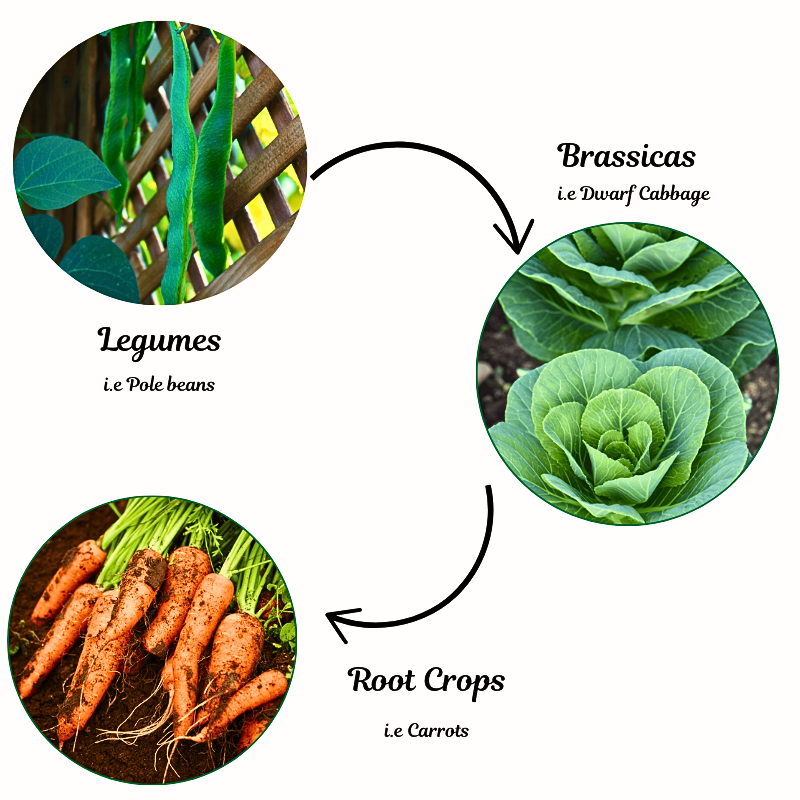
Practical Tips
Clever Gardening Hacks
Limited ground area equals limited harvest. Therefore, you have to look up. Vertical structures like trellises, fences, or even repurposed ladders can create extra space for your plants. It will also provide better air movement and sun exposure. Hanging baskets or stackable planters can help.
Living walls create a living tapestry while buckets, washtubs, or old tires can be used for growing plants. Companion planting (tomatoes/marigolds) is a useful strategy. Some extra work will be needed in rotating containers to get even sun exposure.
Using reflective surfaces like mirrors or Mylar sheets sometimes helps light bounce from these surfaces and reach plants in the shade. Here, it would be best if you played around with angles to get the desired results.
Mulching is an ancient but highly effective strategy in suppressing weeds and retaining water. Grouping plants according to their water needs would be highly efficient as it will simplify watering. If possible, explore drip irrigation systems as well. Read about mulching benefits.
Small gardens require more frequent watering due to faster soil drying. Adjust watering based on your climate and plant needs. For more information on water-saving tips for your garden, you can download our comprehensive guide by clicking water saving tips.
Illustration Before and After – Garden. Image created by krea.ai
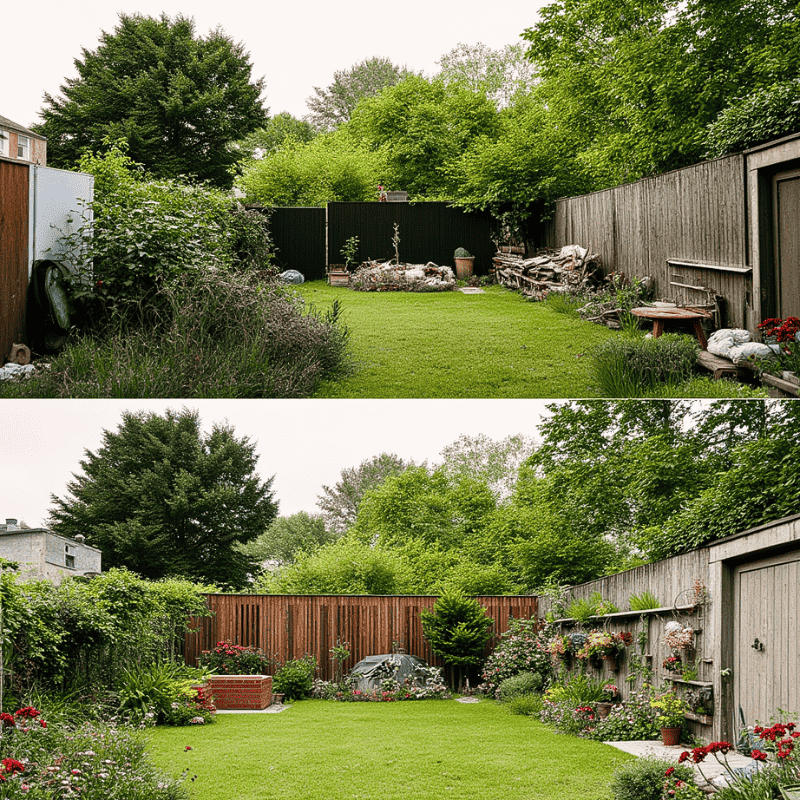
Free Square Foot Gardening Calculator
Garden Grid Calculator
Innovative Gardening Solutions
Creative Approaches
It is time to get creative – old tires or wooden crates lying around in your garage can be repurposed. Do not always look for perfection in your design. A slightly crooked row in your garden will add to its charm. Imperfections tell the stories of resilience and character.
Share your journey by recording steps and ideas that may help others. Don’t be afraid to experiment with different plants by putting them together (although you should try this on a small trial area, before committing to the larger one).
Illustration – succulent plant in a rusty bucket. Image created by krea.ai
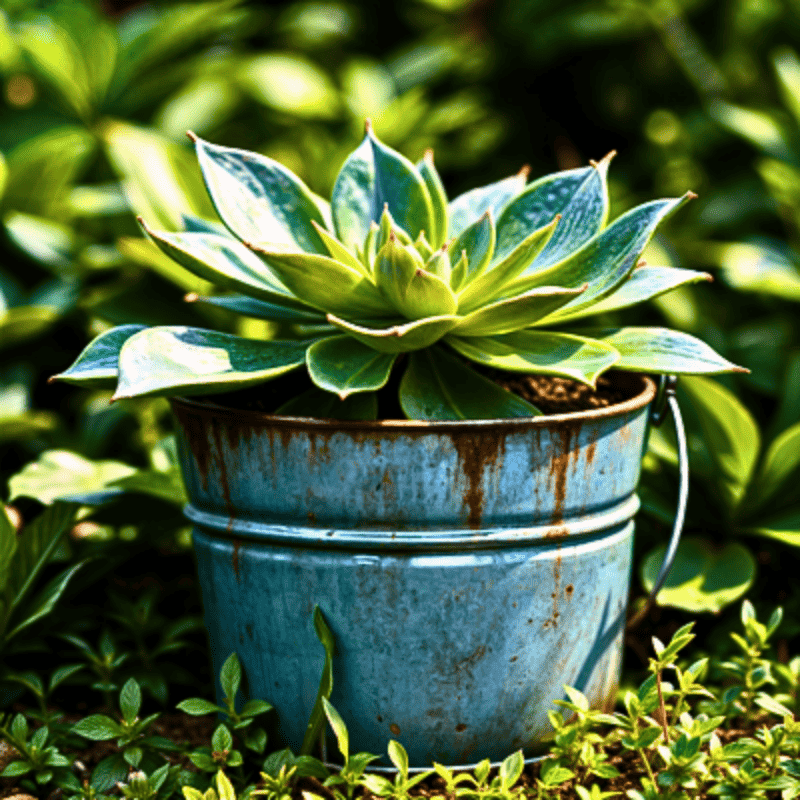
Conclusion
As we conclude exploring different options and approaches in maximizing yields in limited spaces, it would be fair to say that even the tiniest spaces have potential that should be only realized by their owner’s creativities and ideas. If you limit yourself at the beginning by looking only at the ground surface, and not at the space along the wall or the fence, then such an approach may give you disappointing results at the time of harvesting.
Remember your allies on this journey – pollinators like honeybees, bumblebees, butterflies, etc. If you create a thriving space for them, they will return the favor by increasing pollination and your harvest effectively.
Do not stress too much about the imperfections in your small garden. It was not a big, geometrically proportional place to start with, so the developments and adjustments you have made to create a bountiful garden will be appreciated by anyone looking at it, as it will tell a story of the perseverance of a creative gardener. As the saying goes – “the journey matters”.
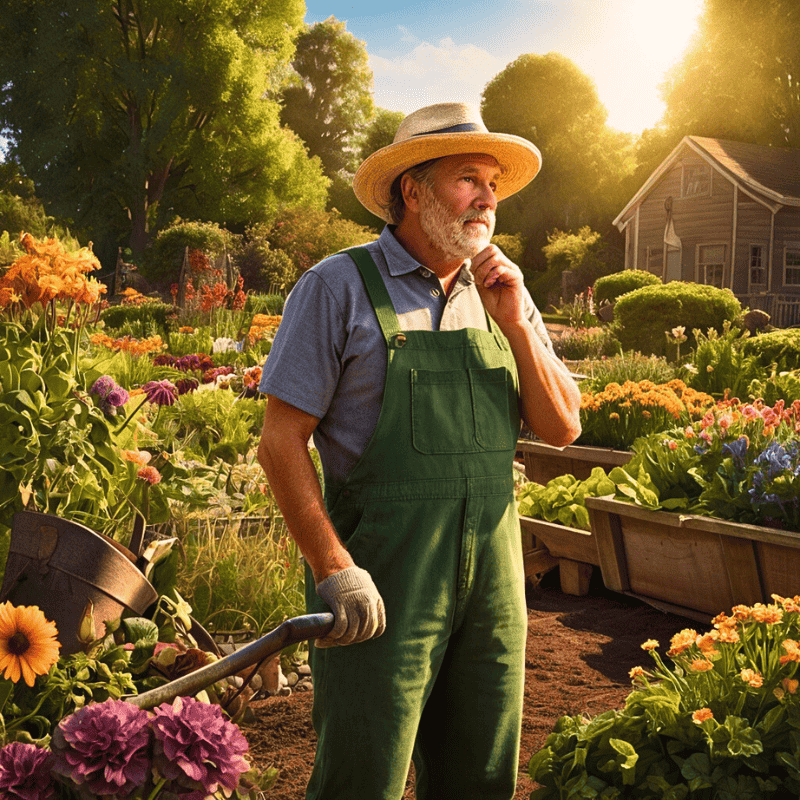
Illustration created by Leonardo.ai
Test Your Knowledge: Maximizing Yield in Small Vegetable Gardens
Ready to Put Your Green Thumb to the Test?
Think you know everything about maximizing yield in small vegetable gardens? Take our dynamic video quiz to test your knowledge! Download the quiz, share it on social media, and challenge your friends to see who knows the most about gardening. Don’t forget to share your results on Pinterest and other platforms!
Before You Go—Grab This Free Guide!
Take your gardening journey to the next level with our exclusive 8-page guide: Maximizing Yield in Small Spaces. Packed with actionable tips and creative ideas, this guide will transform your approach to gardening in compact spaces.
Click the button below to download your free copy and start planning your productive garden today!



